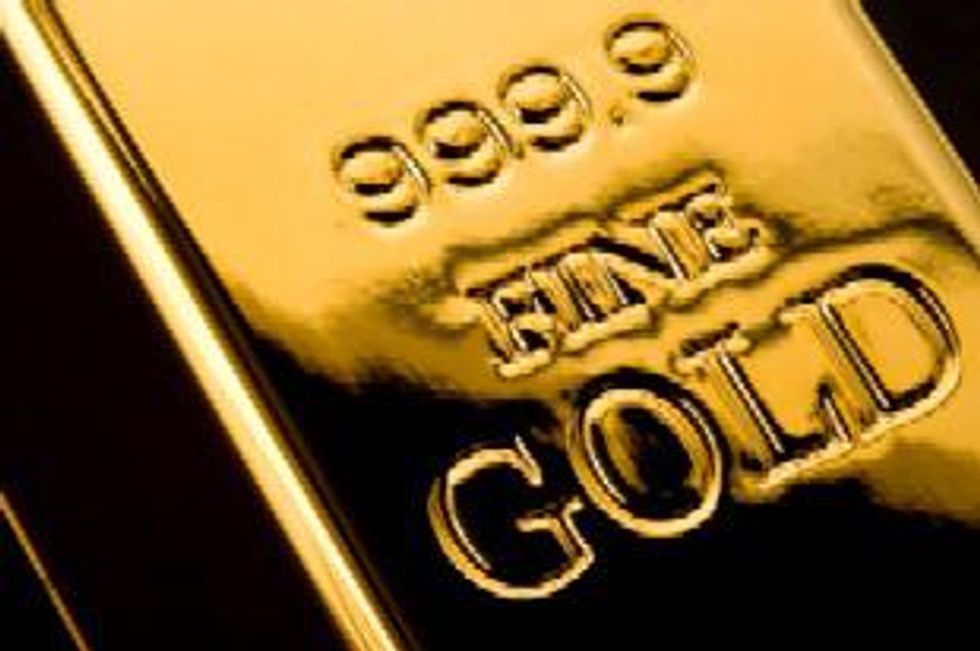US investors normally dominate the gold ETF market but in Q2 that changed.
In Q1, ETF investors displayed a revived appetite for risk and global commodity ETF assets reached the record level of $189 billion. Of the $19 billion that flowed into these ETFs, over $3.6 billion went into gold products, mostly in North America.
As the year has progressed the macroeconomic picture has been deteriorating. Not only has the eurocrisis deepened, but weak data has undermined the appearance of a US recovery and denials that China is experiencing a slowdown. As this has happened, ETF investors have been de-risking and the global market for ETFs contracted 7 percent in the Q2 falling to $175 billion.
According to the Global Commodity ETP Quarterly, there was a total of $1.1 billion in outflows from commodity ETFs but demand for gold ETFs remained robust, though net inflows only amounted to $570 million.
Europe becomes dominant gold ETF investment region
As the US was the predominant source of inflows to gold ETFs in Q1, those investors were also the cause of the significant reduction in Q2, elevating Europe into the uncharacteristic role of the dominant investment region.
Outflows from US gold ETFs actually started in March. While European products saw $742 million in inflows, North American gold ETFs had net outflows of nearly $400 million and investors in the “other” global regions accounted for another $60 million in outflows.
Moving into Q2, North American gold ETFs continued seeing outflows with $516 million lost in April. European products experienced inflows of $279 million and the other regions accounted for inflows of $6 million.
In May, the futures market indicated a persistent lack of confidence in gold. But, the Global Commodity ETP Quarterly reveals that these sentiments extended to ETF investors as well. May is the only month in H1 where there were outflows from all regions. Over $1.4 billion flowed out of gold ETFs, with the US accounting for $657 million in losses, Europe accounting for$730 million and other regions posting outflows of $52 million.
Gold prices were falling and there was an apparently strong aversion to risk. Investors were flocking into bonds and cash and failing to respond to potentially bullish developments in the gold market, such as the IMF report of central bank gold buying in March or China’s cutting of the bank reserve ratio.
Then in June, investors displayed a change of heart to the tune of $2.2 billion of fresh inflows to gold ETFs. The appetite for gold, did not however, return in equal proportions. Europeans returned as the big spenders, investing $1.4 billion that month.
PHAU [ETFS Physical Gold Fund (LSE:PHAU)] saw more inflows in Q2 than any other gold ETF globally, said Nick Brooks, Head of Research and Investment Strategy at ETF Securities.
North American investors, who had sold nearly $1.6 billion from March to May, only invested $782 million in June. Other regions, which like the US had net outflows for the first quarter, only invested $43 million in June. Although all region had come back on board, the outflows during the quarter were so large, that the net inflows to gold ETFs globally for Q2 only amounted to $570 million.
In efforts to get some some clarity on the data, Gold Investing (GIN) News asked Brooks why gold inflows in Q2 are described as strong considering that they are so much lower than those in Q1?
NB: The inflows in the second quarter did slow relative to the first quarter, though relative to history, the flows are still pretty decent.
If you look back over previous months I think you see that the first quarter was an especially strong quarter [as a whole for ETFs]. So we saw particularly strong flows, especially into gold. That coincided with a weaker dollar and investors viewing a lower gold price as a buying opportunity.
Also, I think those flows had a lot to do with the European sovereign crisis sort of coming back into the headlines again after we saw some improvement toward the end of 2011. So I think we saw investors hedge against a worse case scenario for the euro.
In the second quarter we continued to see strong flows into gold though they were a lot lower. But I would argue that the first quarter was particularly strong.
GIN: A significant amount of the inflows in Q2 were from Europe. But this is not normally the case, usually the US is biggest ETF investment region correct?
NB: Yes. Absolutely right.
GIN: But you noted that there were significant outflows from GLD [SPDR Gold Trust (NYSE:GLD)]. What changed?
NB: The most likely explanation: if you look at the data, most of the inflows actually occurred in June. So what happened in June that was special?
I think one factor was continued nervousness about what was happening in Spain with potential implications for the rest of Europe, particularly since the Spanish banking situation was deteriorating quite quickly. Even after the announcement of the bailout package, after dipping a bit, bond yields went back up toward that scary 7 percent level and I think a lot of European investors became concerned about what that meant for the structural viability of the euro on a medium term basis.
I don’t think many investors were expecting that the euro was about break up. A lot of investors just decided that gold was a good place to be.
A second factor that I certainly believe to be a driver of flows was anticipation of more easing from the Fed later this year.
Now, the reason that European investors were more involved than those in the US I’m not sure, but I think the lead differentiator between US and European investors would have to be sovereign risk issues in Europe.
GIN: We’ve seen a lot of inflows into the US dollar as investors are looking for safety. As Europeans are seeing the risks with their own currency, could their investment in gold perhaps say something about their attitude toward currency in general as a safe haven versus gold?
NB: I think that is absolutely right and a very good point. Most the investors in these products are large institutions here in Europe so they move in droves. You could argue that asset allocators or the big funds have been looking at what was happening in Europe — the euro was weakening. Perhaps they put some of their income in US treasuries and other perceived safe US fixed income instruments. But equally they probably also increased their weightings in gold as a safe haven from the euro.
GIN: You noted that many gold ETF investors are expecting QE3 later in the year. If there is no QE3 are you expecting some of those investors to cash out or their interest to dwindle?
NB: If investors believe that we weren’t going to see further easing from the Fed I think you would definitely see outflows from gold ETFs. There are multiple reasons that people will buy a gold ETF. One of the drivers of flows recently has been the concern about currency debasement. The dollar is the world’s reserve currency and the Fed printing money is debasing the currency. If it appeared that the Fed was stepping back from easing that would reduce one of the pillars of demand for gold.
Again, there are other reasons that people buy gold so I don’t think it would cause mass outflows but let’s just say it would certainly have a negative impact on flows.
Securities Disclosure: I, Michelle Smith, hold shares of GLD.





